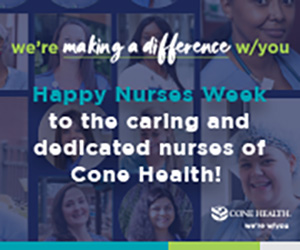Community comes together to cure violence
By Yasmine Regester / June 21, 2018 A group of Greensboro residents have come together to help curb violence in the community.
A group of Greensboro residents have come together to help curb violence in the community.
Community members, CJ Brinson, youth pastor at Faith Christian Church and Gene Blackmon, owner of Prestige Barber College, led a public meeting at Windsor Community Center on June 18 in order to hear the concerns of Greensboro residents regarding how to stop violence in our communities.
In 2017, Greensboro had 33 homicides, and residents are saying enough is enough.
“We have parents and families being affected by the violence happening in our communities. I immediately jumped to do something,” said Brinson. “We want to let the people get involved in curing violence within the community.”
Brinson and Blackmon are proposing the use of a national program called the Cure Violence Health Model, created by Gary Slutkin, MD., professor of Epidemiology and International Health in the University of Illinois at Chicago School of Public Health.
The Cure Violence Model is a public health approach to violence prevention that treats violence as a learned behavior that can be prevented using disease control methods. The model prevents violence through a three-prong approach: violence interrupters, who are trained to intercept and mediate a violent situation; community outreach, where workers act as mentors to connect people to resources; and change violence norms in communities through education and community activities.
The program also implements a partnership with local hospitals so that trained program workers are notified immediately of gunshot wound victims admitted to emergency rooms. These notifications enable workers to respond quickly, often at the hospital, to prevent retaliations.
Representatives from the national Cure Violence team in Chicago, IL and Bull City United (BCU), the site team from Durham, N.C., were on hand to answer questions about the program. Earlier in the day, they met with city and county leaders to discuss the initiative.
Dorel Clayton, supervisor of the Bull City United team for the last two years, works with three outreach workers and four violence interrupters.
“It works. It’s about stopping violence in such a unique way that it’s changing the mind-set of the community. The Cure Violence model teaches a better way to combat violence,” said Clayton.
The Cure Violence Health Model has been replicated at more than 50 sites in 25 U.S. cities and seven countries, according to the Cure Violence Web site. Independent reviews indicate the Cure Violence model has reduced shootings and homicides in some communities by 41 to 71 percent.
According to the BCU team, they saw a 49 percent decrease in shootings in their two target areas in Durham. In 2016, those target areas had 65 shootings. After the program was implemented in 2017, there were 33 recorded shootings. This year, there have been only five shootings in the target areas.
“I’m here to save the lives of my community,” said Keisha Gray, a BCU outreach worker, who revealed she lost a son to street violence nearly a month ago.
“It’s not always easy. I have my moments. But doing the work to save a life is worth it. Peace is a lifestyle,” said Gray, who is also an N.C. Certified Peer Specialist.
Marcus McAllister, International Training/Implementation Coordinator at the UIC School of Public Health, noted that the program not only changes the mindset of community members, it also changes the lives of those who participate. While some may be uncomfortable with the pasts of some of the team members, McAllister says they are the ones who can have the biggest impact.
“You have to get the right workers — people who know the community and have the credibility and respect to walk through some of these neighborhoods,” said McAllister.
BCU violence interrupter David Johnson admitted that he once had a hand in the violence in his community, but says now he and others are working to help build the community up. He noted that leading by example is the best technique he can offer someone.
“Be a role model,” said Johnson. “When you go that extra mile, that energy is contagious. More people want to get involved and collaborate to help the community.”
Civic leaders like Melvin “Skip” Alston, Guilford County Commissioner; Yvonne Johnson, Greensboro City Councilmember and Mayor Pro Tem, Sharon Hightower, District 1 Councilmember, and Marikay Abuzuaiter, at-large Councilmember, all expressed their support to stand behind the program.
“We can get funding from different areas in the county. If we fund this program, there won’t be a need to put more police in the neighborhoods, hire more correctional officers or build more jails,” said Alston. “We can nickel and dime this to death, but we need to look at what it will really cost us not to do it.”
McAllister said that cities tend to allot between $200,000 and $400,000 to fund the program, but its all based on what each city needs for their Cure Violence sites. The model recommends a staff of eight to ten people, but the decision is up to the discretion of the city. The Cure Violence Health Model office provides technical assistance and training for hired staff as part of the program.
Over the next three weeks, McAllister, along with Greensboro representatives, will complete an assessment of the city, which includes identifying target areas, examining crime statistics, and meeting with community members to create a plan for Greensboro.
“We know it works. If Greensboro wants to do it, we can help,” said McAllister.







